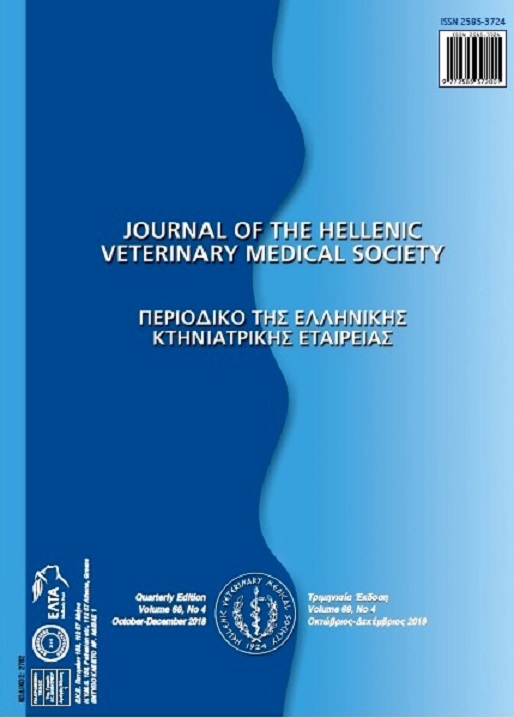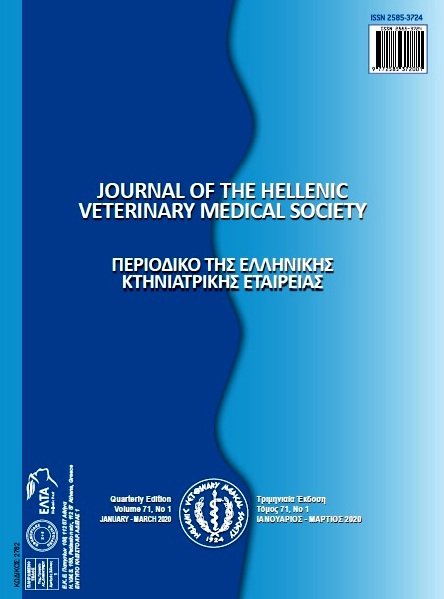Clinical importance of lipid profile in neonatal calves with sepsis
Résumé
In this study, it was aimed to determine of diagnostic importance blood lipid levels in neonatal calves with sepsis. The study was carried out on a total of 70 calves, 60 with sepsis and 10 healthy calves. The calves with sepsis were included in the study, according to clinical and hematological findings. After routine clinical examinations of all the calves, blood samples were taken from the V. jugularis for hematological, lipid profile and biochemical analyzes. There were significantly (P < 0.05) decreased in body temperature, increased in respiration rate and capillary refill time in the calves with sepsis, compared to control group calves. The levels of blood urea nitrogen, creatinine concentrations of calves with sepsis were significantly higher (P < 0.05), however, levels of total cholesterol, HDL, LDL and albumin concentrations were significantly lower (P < 0.05) than control group. In addition, blood triglyceride and VLDL concentrations of calves with sepsis were higher than control group, however there was no statistical difference.
In conclusion, serum total cholesterol, HDL and LDL in neonatal calves with sepsis could be used in evaluation of the sepsis.
Article Details
- Comment citer
-
Aydogdu, U., Coskun, A., Yildiz, R., Guzelbektes, H., & Sen, I. (2019). Clinical importance of lipid profile in neonatal calves with sepsis. Journal of the Hellenic Veterinary Medical Society, 69(4), 1189–1194. https://doi.org/10.12681/jhvms.15926
- Numéro
- Vol. 69 No 4 (2018)
- Rubrique
- Research Articles

Ce travail est disponible sous licence Creative Commons Attribution - Pas d’Utilisation Commerciale 4.0 International.
Authors who publish with this journal agree to the following terms:
· Authors retain copyright and grant the journal right of first publication with the work simultaneously licensed under a Creative Commons Attribution Non-Commercial License that allows others to share the work with an acknowledgement of the work's authorship and initial publication in this journal.
· Authors are able to enter into separate, additional contractual arrangements for the non-exclusive distribution of the journal's published version of the work (e.g. post it to an institutional repository or publish it in a book), with an acknowledgement of its initial publication in this journal.
· Authors are permitted and encouraged to post their work online (preferably in institutional repositories or on their website) prior to and during the submission process, as it can lead to productive exchanges, as well as earlier and greater citation of published work.




